Forthcoming is the title of the 3rd exhibition presented in Space52. Even its title creates a feeling of anticipation for this one as well as all forthcoming exhibitions we are going to see at this newly set up art space run by artists. Forthcoming evokes time and processes and every one of the 22 participating artists relate arbitrarily. Louis Papachristou curates the works of Dimitrios Antonitsis, Irini Bahlitzanaki, Hariton Bekiaris, Dionisis Christofilogiannis, Martha Dimitropoulou, Iraklis Fovakis, Georgia Kotretsos, Nikos Kyriakopoulos, James Lane, Antonis Larios, Yorgos Maraziotis, Maro Michalalakos, Eva Mitala, Jennifer Nelson, Poka-Yio, Nefeli Papanagiotou, Artemis Potamianou, Georgia Sagri, Giorgos Tserionis, Nicolas Vamvouklis, Pantelis Vitaliotis/Magneto and Vasilis Zografos, who attest their personal, cultural, political or critical narratives. Works displayed with space from one another on the walls and floor, pronounced by the abundant light of the high roofed room. Stripping the artworks from their labels and titles, he offers the preconditions of a direct and sincere dialogue between the viewer and the artworks, without any biases.
Text by Elizabeth Louizou
Installation Views by Dimitris Petalas
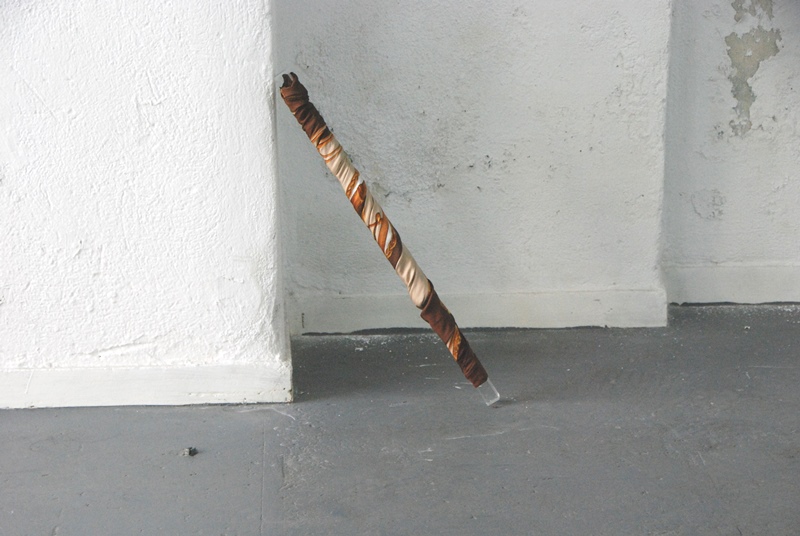
Superstitions pass from one generation to the other, weaving an unseen bondage of the present with the past. In Iraklis Fovakis’ work, a plexiglass frames a folded shirt made by a sough of a 4.5 boidae snake, a female tie made of pearls and a red velvet handkerchief matching the red velvet lining. The many faces of the symbol of snake comes to mind: the therapeutic symbol in ancient Greece, the emblem of medical science, the personification of the devil in the Bible and the chthonic creature of the underworld. Linked to the Greek tradition where the snake skin is a lucky charm, Fovakis’ artifact stands out like an amulet ready to be embodied physically and mentally. One has to believe in superstitions for the charm to be effective. Therefore, the charm stems really from within. Greek tradition is also reflected on Nicolas Vamvouklis’ Study for a support structure. The silk scarf wrapped on a plexiglass cylinder calls to mind the folk culture and performativity. Direct references are made to his homeland, Lesvos, the Bull Festival of Agia Paraskevi, where faithfuls hang silk scarfs on the animals as votive offerings and the Greek panigiri festival with its street sellers. A ready-made scarf of massive production, once combined with the plexiglass and presented in an art space questions what is perceived as high art.
Respectively, the found object employed in Giorgos Maraziotis’ Not Me is a really slim stick is leaning on the wall. Its concaveness signals fragility and delicacy while it echoes the gesture of its deposition. As its peak lies right next to a small painting of a cropped image of a palm tree top, the two of them appear as if they complement each other to form a whole. A different whole is offered by Dionisis Christofilogiannis’ Overlap, a sculpture formed by metal patterns, replicas from Athenian fences, doors and windows, as placed one over the other. Although fences divide and separate the public from the private and one’s property, in this case it brings together the traces of the lives of residents and homeowners who lived in a house one after the other. Having shared the same house, neighborhood, town, country, planet, are we as strangers as we think? Christofilogiannis’ totem-like structure evokes the basic common need for shelter and the jeopardization of human rights. Similarly, the works of Bahlitzanaki, Lane, Nelson and Poka-Yio could not be more topical to current events. Poka-Yio’s cartoon-like portrait of former Greek Prime Minister George Andreas Papandreou, aka GAP, as a post on instagram contradicts the declined popularity of the politician in the media with the increased popularity of the time consuming social media application.
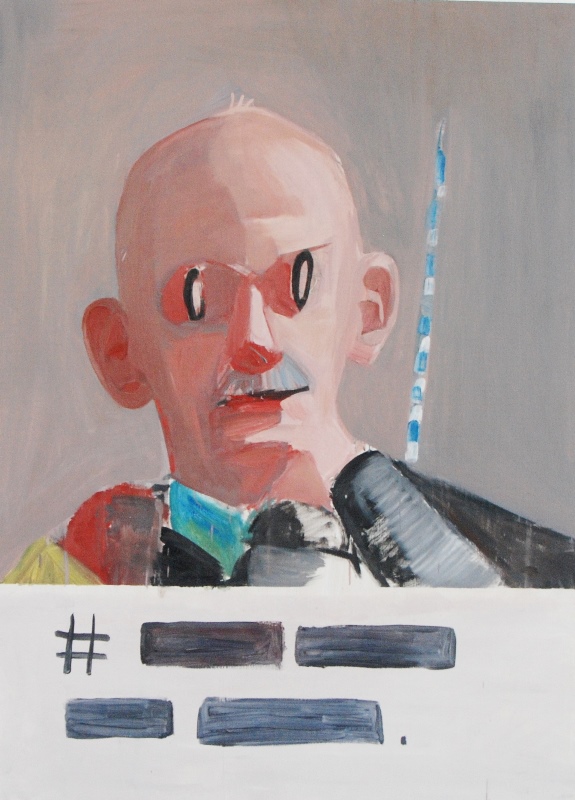
Jennifer Nelson’s pendant, still in progress during my visit, resembles a folklore pendant as those worn by traditional Greek female costumes whose adornments are particles from bank statements reminiscent of the financial and cultural crisis. Irini Bahlitzanaki’s installation of a string with flags over two piles of colored sand, signals the manipulation of the national symbols and national feelings when the utter goal is the overexploitation of resources and their financial benefits. Soil recalls vanity, while the colorful flags resemble a festive decoration, a barriers-free utopia. James Lane’s video and ropes installation on the other prompts the viewer to face todays’ reality in the Greek islands where hundreds of war immigrants struggle to reach and survive. A rope to grab and hang on it to be saved by the inhospitable sea or a slip knot, reflections on the human crisis are abundant. Lane’s sharp depiction of reality is further reinforced when mirrored on Nefeli Papanagiotou’s The Case of Luxury and Sadness, a mirror in the shape of a knife and a hatchet. The sharpness of these objects is so delicately rendered that the fragility of the material implies the sensitivity that lies underneath the relentlessness of the forms.
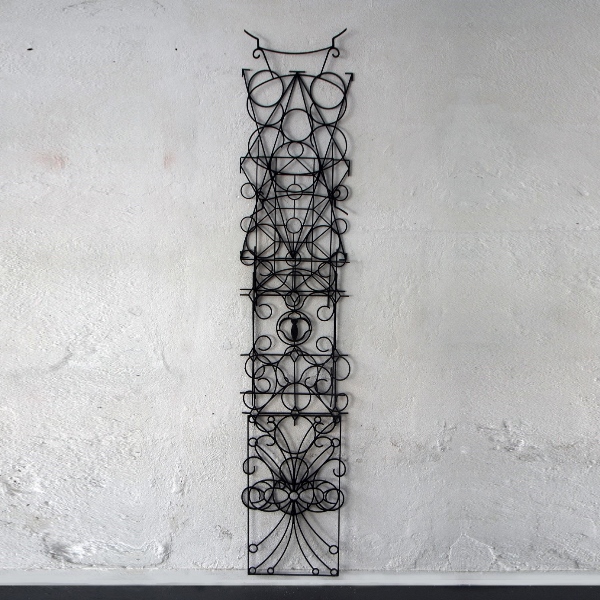
Antonis Larios’ Mr Beastman behind a Fence portrays a human-animal hybrid posing behind a fence, in a golden heavily adorned frame. Reminiscent of the circus monsters and bizarre objects related to the Cabinets of Curiosities. The fence provides a secure distance of the viewer from the figure, implying the distance from the extrinsic and the foreign, in fear of it, otherwise known as xenophobia. An ambiguous figure can also be seen in Artemis Potamianou’s The Unknown Masterpiece which depicts a female portrait with a collage of a torso, different eyes, different ears and different mouth, wide open as if moaning passively or trying to speak. The painting is presented in a heavily adorned old-fashioned gold frame that suggests a worn glam of the past. The direct reference to the homonym book by Honoré de Balzac, The Unknown Masterpiece (1931) raises questions on absolute beauty perfect masterpiece, shading light to the overlooked contribution as well as limitation of the women’s role in art history. A quite different portrait is displayed diagonally at the opposite side of the room. It is the only non-contemporary work on the show.
Nikos Kyriakopoulos’s artwork depicts a female portrait, painted by a black pen on a paper. Its sketchiness prompts the viewer to visualize the enactment of the moment of its creation. An ephemeral moment whose remaining evidence serves as a souvenir, a portrait of the memory. Some memories function as sources of inspiration, like Georgia Sagri’s two artworks. This is why they are not for sale. Not now, not ever. She revisits them infinitely as a source for inspiration for her forthcoming creations. Sagri has transformed the originals which no longer exist, changed their scale and mounted their prints on canvas so transformations become the actual work itself. The fragility of the devastated words swelled on the one canvas and the complexity of the three figures on the other is echoed by the traces of time marked by the wearing of the works.
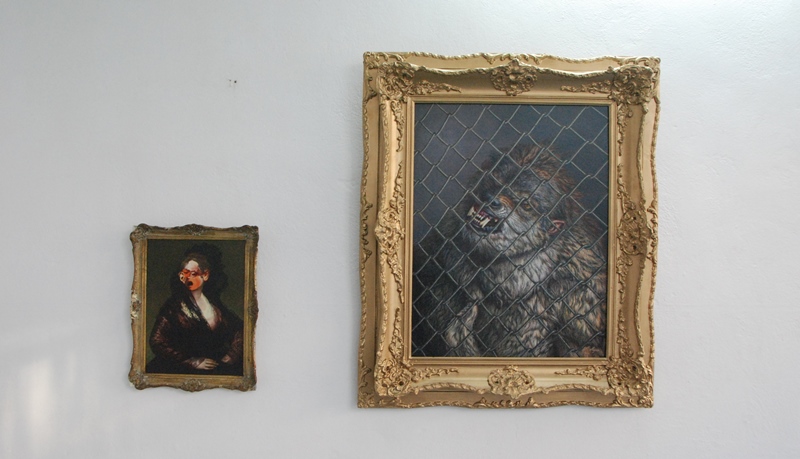
Fragile as pine needles may be, they appear strong and steady in Martha Dimitropoulou’s six bongo-shaped sculptures, half metal, half pine needles. The harmony of the geometry juxtaposed with the spikey texture, recalls equality and the power of the masses. The natural and the man-made are also juxtaposed in Pantelis Vitaliotis/Magneto’s works, both of which depict a photograph of a real landscape with scattered red and blue toy-like objects. The artist’s realization of a space unveils the limitations of our perception on what is real. In the realm of the fantastic, the half cut upper torso of a unicorn that Dimitrios Antonitsis creates from metal and adorns with semi-precious stones, recalls the mutilation of the imagination as one becomes a conformed grown-up. Vasilis Zografos’ painting of a curvy horse stands in for the wholeness of the horse figure and as its head is turned to the right, the eye foes to the painting of a porcelain vase, whose roundness echoes the horse’s and is further reinforced by the round wrap of the painting’s paper.
On the other hand, Giorgos Tserionis’ clay sculptures are asymmetric, somehow finalized before their possible final form. They are sometimes reminiscent of natural life forms, like a sea-gull, or a vase with flower, but primarily abstract and ambiguous, pronouncing the artist’s ongoing dialogue about the medium’s vast realm of possibility. Hariton Bekiaris further experiments with his creations, inviting nature and time to change the appearance of his sculpture. The greenish coating of the surface of his two sculpted heads, a sign of decay or vanitas, could signal the departure of humans from nature and the need for a rapprochement before the inevitable reunion, as well as the fragile human life, mortality.
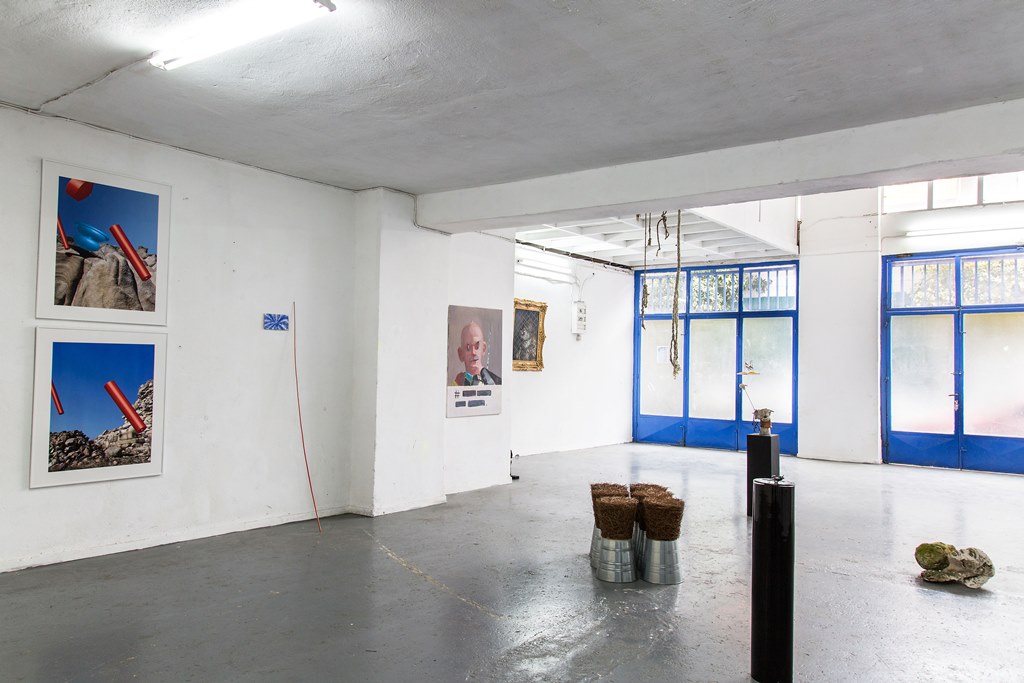
Eva Mitala’s silkscreen Anxiety knows there is more room inside, appears unfinished as the primitive form of a blueprint is now displayed instead of the final product. It offers an insight in the ways in which the artist examines silkscreen techniques and the continuous trials she makes to tame the defaults and errors that occur while layering and forming her abstract prints. The lower part of an ostrich whose pink thin legs stand in a ballet pose is depicted in Maro Michalakakos’ painting framed in a metallic chic cornice reposed on two firebricks. Association of notions of beauty, eroticism and fragility with the feminine are made unconsciously only to highlight the fact that the viewer is unaware of these constructed stereotypes. Further unaware of unnoticed elements Georgia Kotretsos reasserts in her works entitled Objectified, where she recreates and presents the shade of a cornice of a painting as formed by the lights of a museum. The grey translucent shades are centrally positioned against a light pink and a light blue background. By pronouncing an element overlooked as the shadow that a richly ornamented frame casts on a wall of a museum, Kotretsos highlights the unidentified presence artworks cast on the world.
Whether they artworks displayed are studies, latest projects or forthcoming ones, for this time only they coexist for a given time as long as the exhibitions lasts. Links and parallels are drawn between all works, weaving a sensory time travel, just as the past, present and future are all interconnected.
Image credits:
- Artwork by Nicolas Vamvouklis.
- Artwork by Poka-Yio.
- Artwork by Dionisis Christofilogiannis.
- Artworks by Artemis Potamianou (left) and Antonis Larios.
- Installation View by Dimitris Petalas
